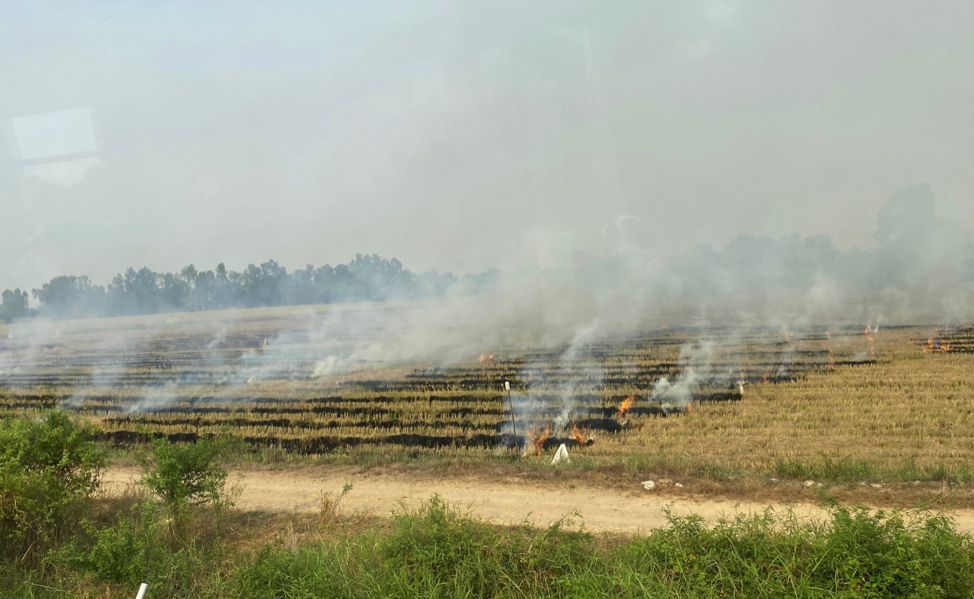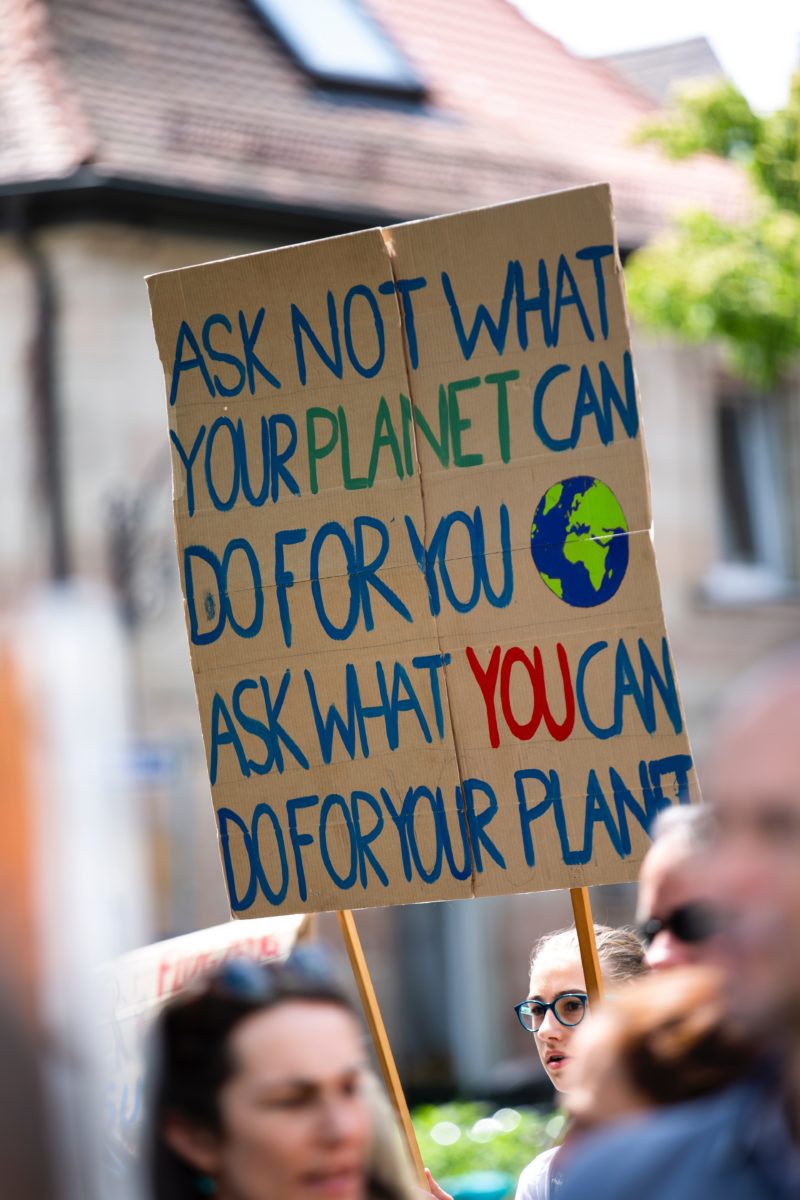
Drawdown solutions
Reprinted from the Thai Enquirer (by Nanticha Ocharoenchai (Lynn) and Sean)
Thailand is one of the countries most vulnerable to climate change and its impacts.
Located on the equator and as part of the Mekong River Basin, the impacts are already being felt — beginning with the most vulnerable.
This year, the region experienced the worst drought in almost half a century, affecting growing seasons, damaging crops and contributing to one of the worst wildfire seasons in a lifetime.
Meanwhile, Bangkok is sinking up to two centimetres every year, and more than 10% of the Thai population now live in places likely to be underwater by 2050. While the government seems to be lagging far behind in progress, potential solutions already exist.
Project drawdown
In March, scientists published the “Drawdown Review 2020”, “the most comprehensive plan ever proposed to reverse global warming”. The project gathered 100 top climate solutions reviewed and analysed by a coalition of researchers, scientists, entrepreneurs and advocates across the globe.
To help the world reach “drawdown” – defined as the point in which greenhouse gas emissions plateau and decline – the research proposes practical models and policy improvements from existing technologies.
Why? Because there is no single silver bullet for climate change. To mitigate and adapt to climate change, a broad range of solutions in various sectors and industries have to be taken into account.
The top of the list consists mainly of systemic changes related to renewable energy, land use, food production, carbon sinks (such as forests, agricultural crops and peatlands), refrigerant management (cooling and insulation), as well as education and healthcare.
Some other examples include increasing solar power generation, reducing food waste, restoring tropical forests, as well as improving girls’ education and enhancing family planning.

National context needed for global solutions
The Drawdown Review proposed an expansive range of solutions but also cover a broad list of global methodologies.
To effectively address climate change, these plans will need to be contextual, and most importantly, local.
Fortunately, Thailand has great potential for development.
Currently, Thailand produces about 15 percent of its total energy from renewables and plans to increase this to 30 percent by 2036 as part of its Alternative Energy Development Plan. The energy systems are in need of extensive development and there are clear opportunities for renewable energy pathways for future development.
Whilst Thailand is not a super emitter by the likes of China or the USA, it is still in the top 25 highest emitters of CO² in the world, which is concerning given the country’s size.
Cognisant of a need for action, in 2015, Thailand submitted its first Nationally Determined Contribution (NDC) to the Paris Agreement which promised to reduce net GHG emissions by 20% of 2030 Business and Usual Levels.
This may seem ambitious to some, but the targets are not even a decrease of current levels; in fact, these targets would put net CO² emission levels at over double, and close to triple, the country’s most recently published current emission figures.
More ambitious targets and action are needed by Thailand to help the world reach even a 2 ℃ scenario. The Intergovernmental Panel on Climate Change (IPCC) has stated that world emissions need to be reduced by 45% of current levels by 2030 and reach net zero by 2050 to reach 1.5℃ — the more ambitious and necessary of the temperature targets.
While countries like China, the USA, and those who have already gone through carbon intensive development periods certainly hold the weight of this responsibility, achieving these targets requires the whole world — including Thailand — to play their part in becoming carbon neutral and not increasing current emission levels.

What must Thailand do?
From analysing the 100 proposed solutions, we have selected 20 as the best solutions for Thailand, ordered by possible effectiveness.
This is by no means an official list, and while Project Drawdown is a collaborative effort from a coalition of climate scientists, the solutions selected and presented below were done by a single climate scientist with specialities in climate change development and policy.
- Refrigerant Management
Over 50% of Thailand’s electricity is used for refrigeration and cooling, according RAC NAMA Thailand, a company committed to the mitigation of refrigeration in the country
This reliance on refrigerants accounts for 20% of the country’s GHG emissions. Widely used refrigerants like HFCs have a 1,000 to 9,000 times higher capacity to warm the climate than carbon dioxide.
The demand for these refrigerants are only expected to increase by 2030 — but the careful management of these products can have a powerful positive impact on our emission rates. It should be said that better insulation in buildings in Thailand would also drastically reduce the need for refrigerants.
- Utility scale solar photovoltaics
Solar power has the highest potential in achieving 100% clean energy, according to the country’s Renewable Energy Outlook produced by the International Renewable Energy Agency and the Ministry of Energy.
With so much sunlight year round, a relatively flat geography, and plenty of available land, Thailand is very well suited to solar power generation though it only accounted for 0.5% of the country’s energy profile in 2016.
- Concentrated solar power
The main difference between concentrated solar power and solar photovoltaics (PV) is that while PV directly converts sunlight into electricity, concentrated solar power uses heat generated by the sun to power steam turbines, similar to the core technology of fossil fuel generation.
While it doesn’t have the same potential as solar PV, the high levels of heat in Thailand — with Bangkok being the hottest city in the world — makes it an ideal environment for this technology.
However, its dependence on clear skies makes concentrated solar power unsuitable for the rainy season. But because it stores heat rather than electricity, this technology is capable of generating electricity even after sunset.
- Health and education
Health and education is the single best way to improve the amount of climate action taken in Thailand. There’s a reason it is so high on the list of effective solutions generated by Project Drawdown.
It not only educates people on the importance of climate action, illustrating its close ties to people’s human rights but empowers women to family plan keeping the birthrate down.
Any individual person has a large climate footprint which is why having a child is one of the most carbon intensive actions a person can take.
This recommendation primarily pertains to population growth – Thailand’s birth rate of 1.53 births per woman is much lower than the global average of 2.42 and only continues to drop.
However, the birthrate can still be further reduced, and climate education does have a great impact on mitigation efforts and thus should be highly valued.
- Biomass power
The energy sector is Thailand’s greatest emitter and that is why it has the greatest potential for improvement.
Every year, Thailand has a terrible burning season which consistently puts Chiang Mai as the worst ranked city for air quality in the world every year, posing a public health concern and threatening human rights.
According to a joint report by the International Renewable Energy Agency and The Ministry of Energy, Thailand’s greatest renewable energy potential by far lies in solid biomass — which is any plant or animal material used for energy production.
In Thailand, the most common sources for biomass are agricultural plant matter such as palm fronds, rice husks, sugar cane bagasse, or corn cobs. The burning of these materials can power traditional steam power plants. However, the burning of biomass creates carbon emissions and is more of a ‘bridge’ alternative to help countries transition to 100% clean energy than it is a permanent, sustainable solution.
- Reduced food waste
Reducing food waste is the solution with the highest potential impact in Project Drawdown’s global estimates — due to the high greenhouse gas intensity and land use emissions in food production and animal agriculture.
Although, this food waste often occurs in highly developed countries — reports indicate that 64% of Thailand’s waste is composed of food.
- Onshore wind power
Thailand has relatively low wind speeds — however, depending on the wind power technology used, onshore wind power still holds great potential.
According to the Renewable Energy Outlook, though it has about half the potential of solar power, it still makes for the second best option to achieve 100% clean energy.
- Improved rice production
Rice production is responsible for at least 10% of global agricultural greenhouse gas emissions and 9-19% of methane emissions.
Methane is a greenhouse gas with 34 times the warming effect of carbon dioxide. By improving rice production, Thailand can grow rice more efficiently, sequester carbon, and decrease methane emissions through improved wetting and drying methods, better nutrients, more climate friendly plant varieties, and by using techniques to avoid tillage while seeding.
Because Thailand is one of the largest producers of rice in the world, these methods can have a big scale impact on greenhouse gas emissions.
- Plant rich diets
Because of the amount of emissions produced by animal agriculture, plant rich diets have been shown to be a very effective way to reduce people’s impact on the environment, as suggested by many reports and studies which all claim that avoiding meat and dairy was the single biggest way an individual can reduce their environmental impact.
Though these recommendations have more bearing in highly developed countries with high animal protein intake, it can still have a great impact in Thailand where meat consumption is on the rise.
- Alternative refrigerants
The fluorinated gases used in our refrigerants have a potent, significant greenhouse effect.
With the amount of refrigerant usage in Thailand, the country can greatly lower its emissions by not only managing its consumption and disposal, but also shifting to alternative refrigerants such as ammonia or captured carbon dioxide.
- Forest Protection
Forests are one of the most effective ways to sequester carbon, being one of the significant ways Thailand continues to keep emissions down. The country has long had a goal of 40% forest cover, making it is crucial to hold the government accountable to this goal and perhaps even increasing it as urban development and intensive agriculture expands.
- Distributed solar photovoltaics
Rooftop Solar PV is a market that remains largely untapped in Thailand. Distributed solar photovoltaics — the bulk of which is rooftop solar panels — are a powerful way for consumers to take energy production into their own hands, giving households and companies the ability to generate electricity for profit.
Over the years, the price of solar energy technology has dropped considerably and continues to do so. In rural or remote areas, solar PVs can also provide access to electricity, bypassing the need for large scale power grids.
- Improved clean cooking stoves
Around 30% of Thailand’s households still use traditional biomass fuel for cooking, which is still listed as a major source for the renewable energy in Thailand.
But annually, well over 4 million people die as a result of these fuels due to its indoor air pollution. Traditional biomass also produces 2-5% of the world’s greenhouse gasses, which makes clean cooking stoves a practical and promising solution to not only reduce climate impacts but also save lives.
- Public transit
Public transit is used quite widely across Bangkok and Thailand, but still highly lacks the infrastructure to be truly effective.
Though these transit systems are consistently packed, traffic in Bangkok is still one of the worst in the world. The transportation sector is the highest emitting sector in Thailand.
Building on existing infrastructures to increase capacity, energy use, access, comfort, speed and other improvements could easily help promote Thailand’s public transit and drastically reduce the number of cars on the road, and in turn drastically reduce Thailand’s emissions as well as air pollution.
- Tropical forest restoration
This solution is only further down on the list because our existing forest must be protected before it can be restored. Despite Thailand’s goal of achieving 40% forest cover, set in 1975, forest cover has actually gone from 53.5% cover in 1961 to 31.6% in 2014.
Continued pressure has slowed this downward movement almost to stagnation, but deforestation slowly continues. Tropical forests are extremely crucial for our climate and environment, serving as vital carbon sinks and ecosystems, thus making it a top priority for climate action.
- Electric cars
Much of Thailand uses cars that emit huge amounts of carbon dioxide, nitrous oxide and methane — highly toxic contributors to climate change and greenhouse gases.
While producing more cars may not be the answer to our problems, electric cars can vastly reduce emissions and improve air quality, especially in big cities like Bangkok.
- Biochar production
Biochar, produced by slowly baking biomass through a process called pyrolysis, can sequester large amounts of carbon and help enrich soil.
This is a viable solution for Thailand because of the huge amounts of biomass we have.
As previously mentioned, biomass should be treated as a transitory form of energy. The same material cannot go through the both processes, thus while biomass is the more powerful recommendation as of right now, biochar can continue to put these materials to good use sequestering carbon, once biomass production begins to be phased out by cleaner forms of energy.
- Peatland protection and rewetting
Peatlands are a type of wetlands made up of partially decayed organic matter that has immense carbon storage capacity — despite only covering only 3% of the world’s surface, they store more carbon than anything but oceans and store one third of the world’s soil carbon.
However, if not protected, this carbon sink can turn into a big carbon emitter. There is a substantial amount of peatland in Thailand — around 45,300 to 64,500 hectares — all of which needs to be protected.
- Recycling
The infrastructure and culture for recycling in Thailand still lags far behind.
Recycling is an important way to curb emissions from manufacturing and landfills. However, what’s more important than recycling is to avoid the consumption of single use products altogether — policy for this should be quite easy to implement if finally taken seriously.
- Alternative cement
Cement is the second most consumed resource on the planet after water — accounting for an estimated 8% of global emissions.
While the top five highest producers — dominated by China and India — produce 71% of the world’s cement, Thailand is still among the top 15 in an industry that spans 160 countries.
The most common form of concrete is a combination of crushed limestone and aluminosilicate clay that is roasted in a kiln, a process which is extremely harmful to both human and ecological health. Alternative cements can reduce emissions by using materials like volcanic ash or industrial waste products that upsurge the most carbon and energy intensive process in cement production.
Though Thailand is beginning to take big steps toward cleaner production, it still has a long way to go as one of the largest producers of cement.
To push for more climate action in Thailand and work towards implementing these proposed solutions require individual change and governmental pressure.
Equipped with the knowledge of what has to be done and how we might achieve it, we can put more concrete pressure on the government and the people around us to act.
The technology and methods to actualise the change we need to save our planet exists. The twenty solutions listed may not all necessarily be the most applicable in our context, but the Drawdown Project has presented us with viable options that are being implemented in the world right now.
The next step is to call for these technologies and methods to be invested by our government and other relevant organisations — that they be put into policy, and that those around us demand the same.
Perhaps for many of you, climate change has sat on the back burner, particularly with the current political situation.
However, there is no denying that climate change should continue to be a priority issue for all of us.
Without immediate and drastic change over the next few decades, billions, particularly the most vulnerable, will suffer. We implore you to take to the streets, demand action from the government, get involved in your local community, or even just spread awareness about these issues and solutions.
Drawdown Review
A renewable energy outlook for Thailand published by IRENA:
https://www.irena.org/-/media/Files/IRENA/Agency/Publication/2017/Nov/IRENA_Outlook_Thailand_2017.pdf
https://www4.unfccc.int/sites/SubmissionsStaging/NationalReports/Documents/52047631_Thailand-NC3-1-Thailand%20TNC.pdf (page 32 Most up to date emission portfolio from Thailand by the UNFCCC – also divided into sectors and GHG)





